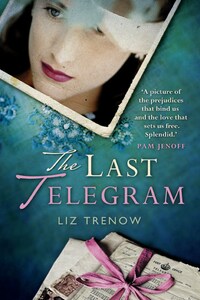AVON
An imprint of HarperCollinsPublishers Ltd.
1 London Bridge Street
London SE1 9GF
www.harpercollins.co.uk
Copyright © Liz Trenow 2012
Liz Trenow asserts the moral right to be identified as the author of this work
A catalogue record for this book is available from the British Library
This novel is entirely a work of fiction.
The names, characters and incidents portrayed in it are the work of the author’s imagination. Any resemblance to actual persons, living or dead, events or localities is entirely coincidental.
All rights reserved under International and Pan-American Copyright Conventions. By payment of the required fees, you have been granted the non-exclusive, non-transferable right to access and read the text of this ebook on-screen. No part of this text may be reproduced, transmitted, downloaded, decompiled, reverse engineered, or stored in or introduced into any information storage and retrieval system, in any form or by any means, whether electronic or mechanical, now known or hereinafter invented, without the express written permission of HarperCollins ebooks
HarperCollinsPublishers has made every reasonable effort to ensure that any picture content or written content has been included or removed in accordance with the contractual and technological constraints in operation at the time of publication
Source ISBN: 9780007480821
Ebook Edition © September 2012 ISBN: 9780007480838
Version: 2018-07-17
The history of silk owes much to the fairer sex. The Chinese Empress Hsi Ling is credited with its first discovery, in 2640 BC. It is said that a cocoon fell from the mulberry tree, under which she was sitting, into her cup of tea. As she sought to remove the cocoon its sticky threads started to unravel and cling to her fingers. Upon examining the thread more closely she immediately saw its potential and dedicated her life thereafter to the cultivation of the silkworm and production of silk for weaving and embroidery.
From The History of Silk, by Harold Verner
Perhaps because death leaves so little to say, funeral guests seem to take refuge in platitudes. ‘He had a good innings … Splendid send-off … Very moving service … Such beautiful flowers … You are so wonderfully brave, Lily.’
It’s not bravery: my squared shoulders, head held high, that careful expression of modesty and gratitude. Not bravery, just determination to survive today and, as soon as possible, get on with what remains of my life. The body in the expensive coffin, lined with Verners’ silk and decorated with lilies, and now deep in the ground, is not the man I’ve loved and shared my life with for the past fifty-five years.
It is not the man who helped to put me back together after the shattering events of the war, who held my hand and steadied my heart with his wise counsel, the man who took me as his own and became a loving father and grandfather. The joy of our lives together helped us both to bury the terrors of the past. No, that person disappeared months ago, when the illness took its final hold. His death was a blessed release and I have already done my grieving. Or at least, that’s what I keep telling myself.
After the service the house fills with people wanting to ‘pay their final respects’. But I long for them to go, and eventually they drift away, leaving behind the detritus of a remembered life along with the half-drunk glasses, the discarded morsels of food.
Around me, my son and his family are washing up, vacuuming, emptying the bins. In the harsh kitchen light I notice a shimmer of grey in Simon’s hair (the rest of it is dark, like his father’s) and realise with a jolt that he must be well into middle age. His wife Louise, once so slight, is rather rounder than before. No wonder, after two babies. They deserve to live in this house, I think, to have more room for their growing family. But today is not the right time to talk about moving.
I go to sit in the drawing room as they have bidden me, and watch for the first time the slide show that they have created for the guests at the wake. I am mesmerised as the TV screen flicks through familiar photographs, charting his life from sepia babyhood through monochrome middle years and into a technicolour old age, each image occupying the screen for just a few brief seconds before blurring into the next.














